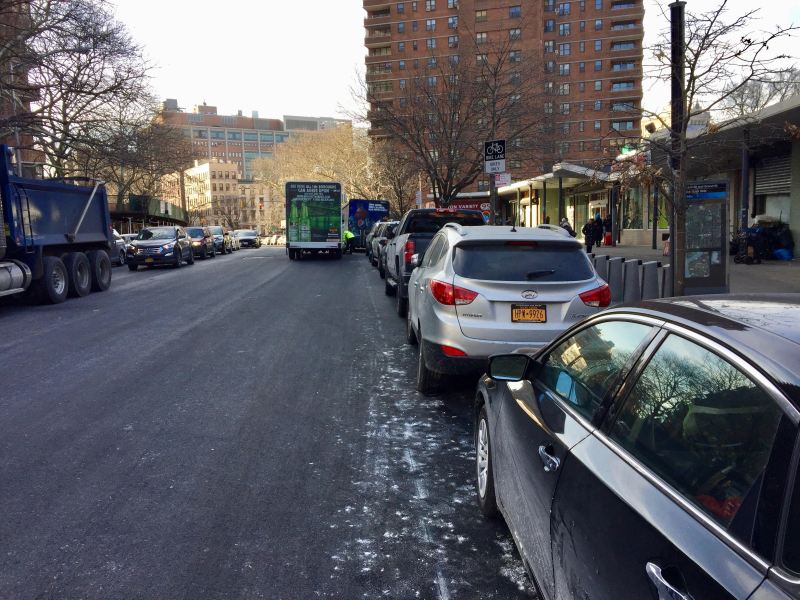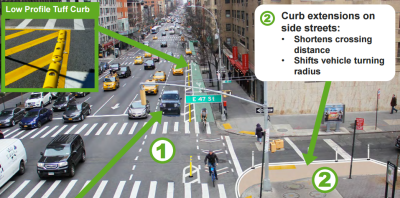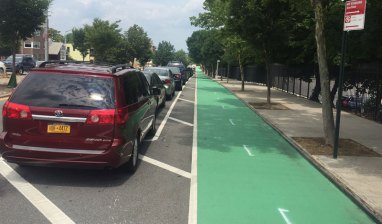Op-Ed: Paint The Bike Lane, Dammit, Before Someone Dies!

When is a parking-protected bike lane — a street design pioneered in this country by our own city Department of Transportation — no longer a parking-protected bike lane?
When that same DOT removes all street markings for street resurfacing, leaving cyclists who have become attuned to the city’s best on-street bike routes to fend for themselves in heavy traffic for weeks, a month — sometimes more.
Was making my way over to the bike lane and realized it’s still not there. This is my favorite pick for transit in my district and I know we can do better @NYC_DOT. https://t.co/uxzKRbCFCC pic.twitter.com/eX9UskqGRK
— Carlina Rivera (@CarlinaRivera) May 19, 2019
The pattern is this: In warmer months, DOT’s division of Roadway Repair and Maintenance scrapes old pavement (known as “milling”) from streets whose surfaces have become worn, and then several weeks later applies a new surface. New paint markings eventually follow.
New York City bike riders are living with this process right now, in spades, because DOT has milled portions of the protected bike-lane corridors of First, Second, Eighth and Ninth avenues in Manhattan at the same time! But the problem is not new.
The remedy isn’t difficult. DOT should simply mark protected bike lanes with cones (!) while painted street markings are absent.
This construction crew on Valencia are doing it right. ??? pic.twitter.com/r1tJLHy0i4
— Parker Day (@desertflyer) April 4, 2019
This problem has been with us since DOT began resurfacing streets that were reconfigured with protected bike lanes, but it has become more urgent in recent years because of the proliferation of two-way bike lanes on one-way streets.
The overnight removal of protected bike lanes on one-way avenues can be daunting, inconvenient and confusing for cyclists and motorists alike. But it is downright dangerous when DOT removes the marking for two-way bike lanes on one-way streets.
In addition to marking protected bike lanes temporarily with cones, DOT also could impose a quicker schedule from milling to resurfacing on key bike routes. This is just a matter of discipline in scheduling the crews who do the work. Bike riders are far more sensitive to bad road surfaces than cars are, and milled streets certainly qualify as bad. Plus, RRM would have to keep its cones out for fewer days if can get markings back in place faster.
Fixing the problem of protected bike lanes and street resurfacing would close a glaring policy gap that adds to the sense of cyclists and non-bike riders alike that the city isn’t serious about building bikes into a mainstream means of transportation.
A fundamental challenge for cycling in New York today is whether institutional commitment to bike transportation can be extended from a few parts of DOT to the entirety of city government.
Even in DOT, major units are not acting any differently than they did in 2006 or 1996, although the streets themselves have changed considerably in the past decade.
Getting their practices aligned with the city’s stated goals for expanding cycling has to happen if we are going to build a bike-friendly New York.
Jon Orcutt is the communications director of Bike New York. He was policy director at the Department of Transportation during the Bloomberg Administration.

